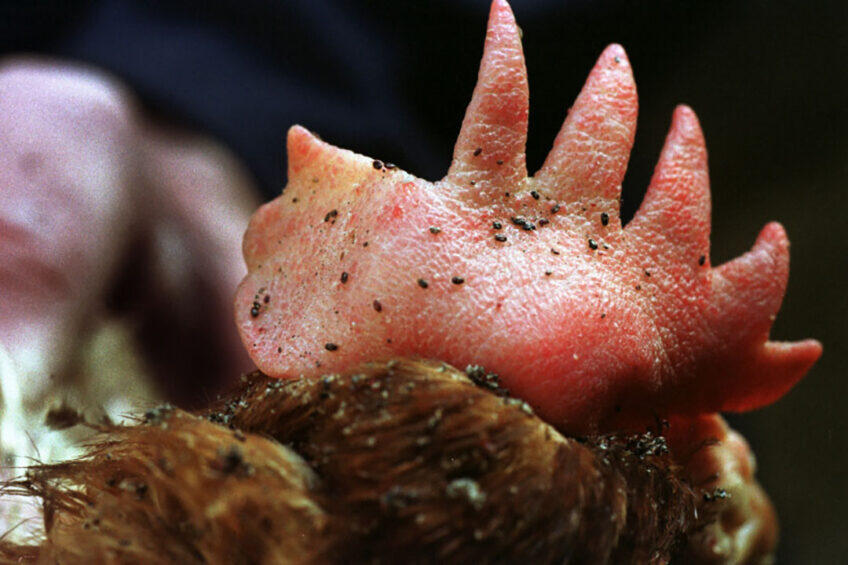Red mite threat warning during bird flu housing order

Poultry producers are being urged to watch out for red mite outbreaks in their units following the introduction of the housing order to keep birds indoors in the wake of the UK avian flu epidemic.
Although red mites are not usually associated during the winter when the weather is cooler, the introduction of the housing order and the associated closing of pop holes can create favourable conditions for the mite.
Katie Pitman, MSD Animal Health UK technical poultry manager: “The birds will already be stressed due to being permanently housed, and so producers don’t want to add to this pressure by not keeping on top of red mite.”
Red mite symptoms
Birds affected by red mite can display restlessness, weight loss and a drop in egg production and quality. In extreme cases, the parasite can also cause anaemia and mortality. Additionally, red mite suppresses a bird’s immune system, meaning chickens affected by high infestations are more susceptible to other infections.
Red mite traps
Producers can create their own simple red mite traps made from corrugated cards rolled up and inserted into a plastic tube similar in diameter to a water pipe. They should be placed strategically around the shed where red mites are likely to travel at night, such as near nesting boxes or perches. After 48 hours, the traps can be collected, put into individual bags, and placed in the freezer for a further 48 hours to kill the mites, making it easier to count the number of mites.
“It’s recommended that monitoring is continued throughout the period the housing order is in place because, by the time an infestation is noticeable, it’s likely that flock productivity and welfare have already been compromised,” said Pitman.
Biosecurity
Alongside monitoring, proactive biosecurity measures are essential to help prevent red mite infestation from spreading. For example, keeping equipment clean and avoiding sharing of equipment between poultry sheds is advised. Providing clean footwear and overalls for team members to wear in each shed and limiting external visitors on the site should also be considered.
Defra guidelines say farmers should check for skin parasites like red mite when birds are indoors under the housing order.













